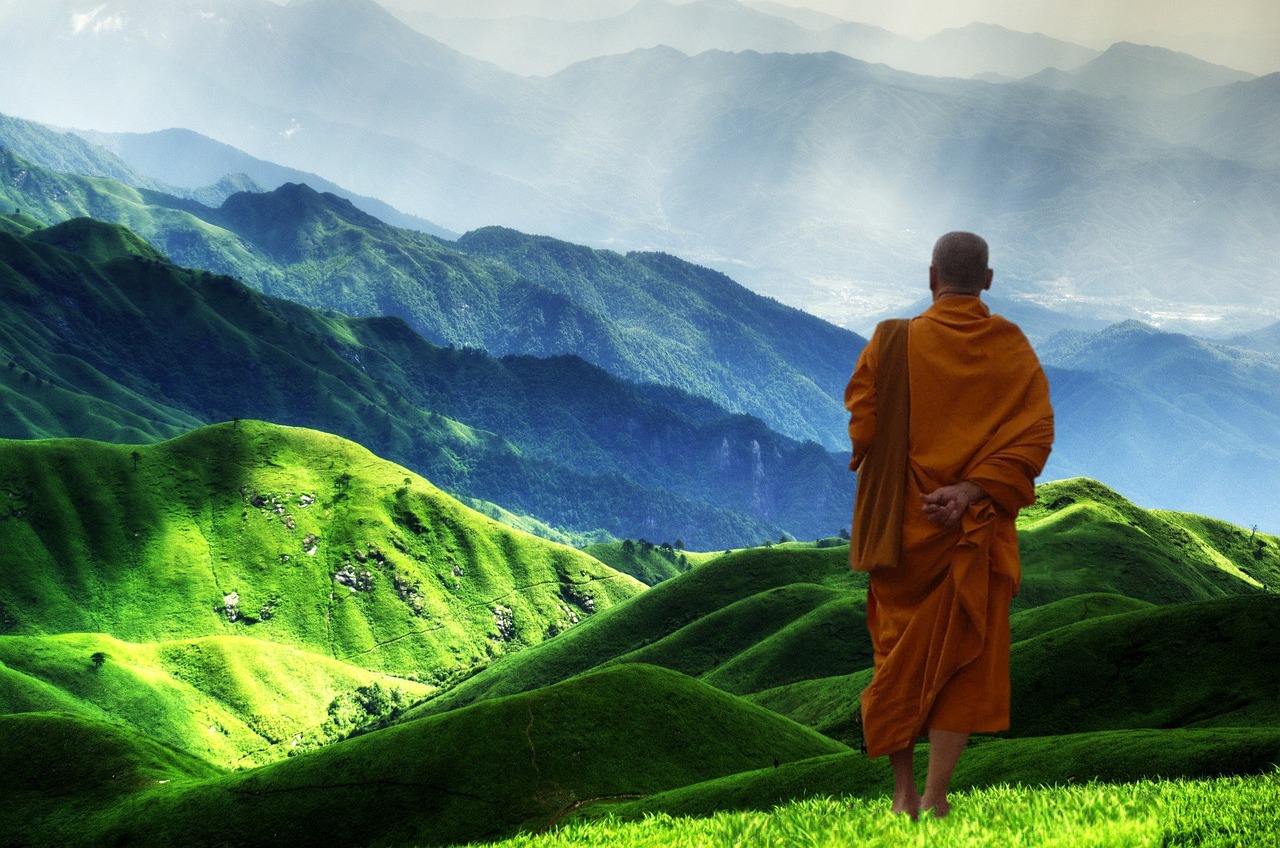In it Mahayana Buddhism, the concept of būmi o “bodhisattva lands” refers to the progressive stages of spiritual development that a bodhisattva It crosses in its way to complete lighting or Budeidad. These stages are essential to understand the deep and continuous commitment of a bodhisattva, whose aspiration is not only to reach Nirvana for itself, but to guide all sensory beings towards the liberation of suffering. The study of the BHūmis provides a deeper understanding of the Mahayana road and the spiritual structure that sustains the practice of bodhisattva.
Origin and meaning of the Bhūmi concept
The word būmi In Sanskrit it means “tierra” o “level”, and in the context of Mahayana Buddhism, refers to the levels or stages that a bodhisattva You must cross on your way to Buddudity. These stages were first detailed in the Daśabhūmika Sūtra, an important Mahayana text that is part of the Avataṃsaka sūtra (Guirnalda Sutra), A compendium of teachings that puts a strong emphasis on the path of bodhisattva. BHūmis describe spiritual progress, each representing a degree of wisdom and compassion that the bodhisattva You must cultivate.
The ten lands of bodhisattva They represent a series of mental and spiritual transformations that culminate in the perfect wisdom and the universal compassion of a Buddha. Each Bhūmi implies overcoming certain obstacles and perfecting certain virtues, known as Paramitas. The process is gradual and cumulative, which means that the skills and understandings acquired in a BHūmi are carried out to the next, creating a dynamic and continuous path towards lighting.
The ten bhūmis of the Bodhisattva
Each of the ten bhūmis represents a level of spiritual realization and is associated with a specific paramite, a virtue that the bodhisattva Perfect at each stage. Next, These ten lands are described in detail:
First Bhūmi: In Pramudit (THE LAND OF JOY)
The first Bhūmi, call In Pramudit, translates as “THE LAND OF JOY”. Here, he bodhisattva experience great joy when he realizes that he has entered the way to Buddudity. This joy comes from the sincere commitment to help all senior beings and have begun the trip to lighting.
At this stage, he bodhisattva Perfect the first paramite, the generosity (danish). Generosity in this context not only refers to giving material goods, but also to share the teaching of Dharma, guide others and offer protection and support. The practice of generosity helps bodhisattva to overcome attachment and cultivate an attitude of detachment and benevolence towards all beings.
Besides, en in Pramudit, he bodhisattva begins to develop a deep understanding of emptiness (śūnyatā), The idea that all phenomena are intrinsically empty of independent existence. This understanding helps reduce selfishness and encourages an altruistic vision of life.
Second Bhūmi: In a valla (The land of purity)
In it Mahayana Buddhism, the concept of būmi o "bodhisattva lands" refers to the progressive stages of spiritual development that a bodhisattva It crosses in its way to complete lighting or Budeidad. These stages are essential to understand the deep and continuous commitment of a bodhisattva, whose aspiration is not only to reach Nirvana for itself, but to guide all sensory beings towards the liberation of suffering. The study of the BHūmis provides a deeper understanding of the Mahayana road and the structure . . .
| The full content of this section is only available to members, Registration is free, accede with your username or high dates. |
Tenth bhūmi: Dharmameghā (The Earth of the Cloud of the Dharma)
The tenth and last Bhūmi, Dharmameghā, means “Dharma cloud land”. At this stage, he bodhisattva reaches the culmination of its path, where it becomes a source of spiritual blessings for all beings, Like a cloud that water the earth with rain.
That's, he bodhisattva Perfect the paramite of absolute knowledge (jñāna). This knowledge is omniscient, covering all aspects of reality, From the smallest to the most vast. He bodhisattva At this stage it is on the verge of Buddudity, having completed its spiritual development and being ready to manifest as a completely illuminated Buddha.
The cloud of Dharma symbolizes the ability of bodhisattva To offer the Dharma To all beings, providing adequate teaching to each one according to their needs. This ability to impart Dharma It is unlimited, and the bodhisattva can benefit all beings in any circumstance.
The Bhūmis and Buddhity
The Ten Bhūmis path culminates in the complete realization of Buddudity, the state in which a bodhisattva becomes a Buddha, A completely illuminated being. Upon reaching the tenth būmi, he bodhisattva has perfected all virtues and eliminated all mental impurities. At this point, The compassion and wisdom of bodhisattva They are fully integrated, allowing him to act in the world spontaneously and perfectly, Without conscious effort.
The Buddha, having traveled the ten bhūmis, He is able to demonstrate in innumerable ways to guide senses towards liberation. The lighting of a Buddha is not just personal; It is a lighting that benefits all beings through teaching, The example and manifestation of its infinite compassion.
Conclusion
The ten bhūmis of the bodhisattva They represent a detailed spiritual map of the Mahayana road towards lighting. Each land or level marks a significant advance in the purification of the mind, The perfection of virtues and the development of wisdom and compassion. The study and contemplation of these Bhūmis not only offer a guide for Buddhist practitioners, but also inspire a deep commitment to the ideal of the bodhisattva, whose final goal is the liberation of all sensory beings.
The path of the bhūmis teaches that lighting is not an instantaneous achievement, but a gradual process that requires effort, dedication and altruistic motivation. By following this path, he bodhisattva Not only transforms your own mind, but also helps transform the world, creating an environment where all beings can achieve peace and liberation.

